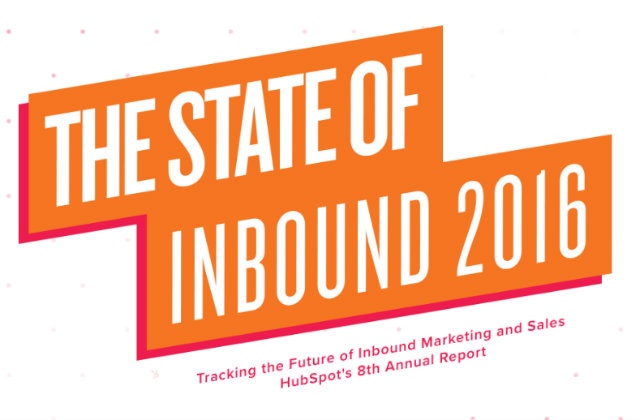
Hubspot has released its global 8th annual The State of Inbound, a top notch report delivering an in-depth analysis of the main global trends. ‘Inbound’, of course, is the engine that drives the whole take on the future of marketing.
The report, however, is not limited to a partial view on the matter. On the contrary, it delivers useful insights into the most urgent challenges and priorities for marketers and salespeople, based on data gathered from thousands of the world’s leading professionals.
The inbound marketing methodology is all about making business more human, empathetic and - ultimately - more useful to the customer. It rejects the traditional pushy strategies, replaced by an approach based on timely, personalized content.
When technology evolves, marketing changes too. So, where the first editions of the report mostly emphasized the need to find a way to turn complete strangers into known visitors, now the focus is on how to convert visitors into leads and finally turn them into happy customers.
The inbound methodology is all here, a looping circle that brings users from complete strangers to loyal supporters of your brand. Priorities change over the years, but the heart of the challenge remains the same: How you can create a memorable customer experience, to engage and monetize customers across the whole customer journey.
In this perspective, effective contents take the center stage. Content marketing is the foundational element of the inbound methodology, a way to connect brands and customers in a more organic way than traditional advertising.
Most companies are now aware of the importance of contents, online and in-store. What is still lacking is the ability to line up their strategy with what customers really want, and where they try to find it.
Marketers should expand their range way beyond the website, still considered as the hub of the brand identity, but not sufficient anymore to enrich the digital customer experience.
The reason is simple: Audiences are finding content in a wide variety of places. Social media and mobile represent the main areas that marketers prioritize, as people spend more and more time to share their life on the online communities, mostly using their smartphones.
“Consumers are increasingly turning to social media, messaging apps and bots for content via their mobile. This means that content consumption is becoming decentralized across the web. Today, marketers’ content strategy should extend beyond their own blogs and website, and include publishing through external outlets.”
As for more traditional marketing activities, paid advertising is now considered the most overrated marketing tactic, and is replaced by a more organic approach to ads (i.e. social advertising, retargeting and remarketing).
Even Sales must evolve from cold calls to a more ‘inbound’ approach, due to the evolution of technology and customer behaviors. Whether it is B2B or B2C, Sales is now wrapped in the online and mobile environments.
If we have to choose just one main trend that you need to watch out, we would go with social selling. Once again, mobile proves to be the most effective channel to convey the ‘smarketing’ (sales + marketing) messages.
The 2016 edition of the State of Inbound highlights the urge to transform how you do business. Focus on the whole process, not just one aspect of the customer journey. Moreover, add a human touch to whatever you plan and do.
Have a look at the State of Inbound 2016.
Also, if you have not done yet, download The Mobile Engagement Playbook, a collection of relevant insights based on many years of Neosperience's expertise that'll help you to overcome the challenges of the digital transformation and grow your business exponentially.



 Your magnifing glass to deeply understand your users and increase the value of each relatonship.
Your magnifing glass to deeply understand your users and increase the value of each relatonship. Listen to the voice of your customers deeply to understand what they truly want.
Listen to the voice of your customers deeply to understand what they truly want. The Lead Generation Platform to get leads from anonymous traffic on your website.
The Lead Generation Platform to get leads from anonymous traffic on your website.  Understand the behavior of people in physical spaces and monitor safety requirements.
Understand the behavior of people in physical spaces and monitor safety requirements. The Digital Commerce Platform designed to follow the most modern technological standards..
The Digital Commerce Platform designed to follow the most modern technological standards.. The XReality platform to tell brand and product stories by connecting physical and digital worlds.
The XReality platform to tell brand and product stories by connecting physical and digital worlds. Points, rewards, levels, badges, missions: a world of nudges to nurture your customer community.
Points, rewards, levels, badges, missions: a world of nudges to nurture your customer community. Discover all the other solutions!
Discover all the other solutions!









